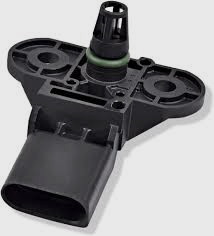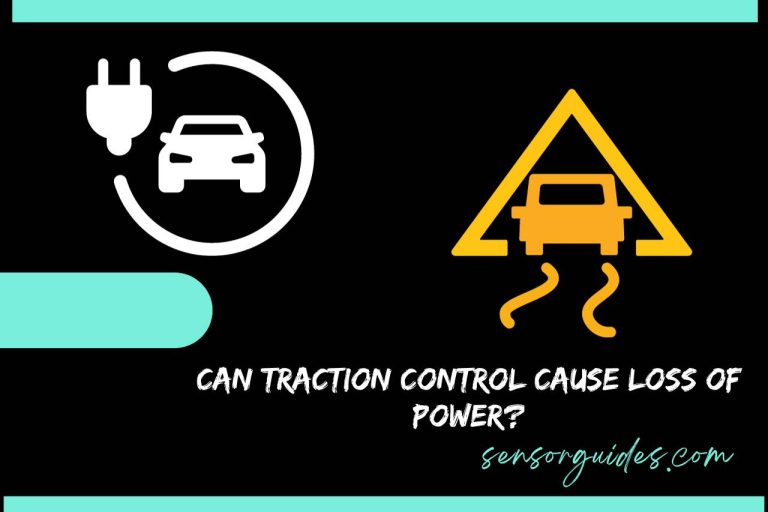“Unveiling the Enigma: Decoding the Map Sensor 6.7 Powerstroke Engine” – 2023
Introduction
Map sensors, short for manifold absolute pressure sensors, are key parts in diesel engines, helping enhance engine performance. They constantly check the air pressure in the engine’s intake manifold, giving vital details to the engine control module (ECM). The ECM uses this data to tweak fuel injection, ignition timing, and other important settings. This leads to better combustion and boosts engine power.
The Map Sensor 6.7 Powerstroke engine, a renowned workhorse in the automotive industry, relies heavily on the accuracy and reliability of its map sensor. This sensor provides the ECM with precise information about the air density in the intake manifold, which is essential for maintaining optimal air-fuel mixture ratios. Accurate map sensor readings contribute to improved fuel efficiency, enhanced power output, and reduced emissions in the 6.7 Powerstroke.

Fundamentals of Map Sensors
What is a Map Sensor?
Definition and Purpose:
A map sensor is a gadget that figures out the total air pressure in an engine’s intake manifold. Its re-adings are sent to the engine control module (ECM). The ECM uses these to figure out how dense the air is and tune the engine’s workings. The main job of a map sensor? It’s to help the engine work as best as it can. It helps balance the air and fuel mix, maximize power and keep emissions to a minimum.
Working Principle:
Map Sensor 6.7 Powerstroke typically employ a pressure-sensitive diaphragm or piezoresistive element that translates changes in air pressure into electrical signals. These signals, proportional to the absolute pressure in the intake manifold, are sent to the ECM for interpretation. The ECM then utilizes this information to adjust fuel injection, ignition timing, and other engine parameters, ensuring efficient combustion and optimal engine performance.
Evolutionary Insights
Historical Development:
The concept of map sensors emerged in the mid-20th century, driven by the need for more precise engine control systems. Early map sensors utilized mechanical diaphragm designs, which were later replaced by more advanced piezoresistive sensors. These advancements significantly improved sensor accuracy and reliability, paving the way for sophisticated engine management systems.
Technological Advancements:
In recent years, map sensor technology has continued to evolve, incorporating new materials, manufacturing processes, and signal processing techniques. These advancements have resulted in sensors with enhanced sensitivity, durability, and responsiveness, further optimizing engine performance and emissions control.
Impact on Engine Performance:
Map Sensor 6.7 Powerstroke : The advent of map sensors revolutionized engine control systems, enabling more precise and efficient engine operation. These sensors play a critical role in maintaining optimal air-fuel mixtures, maximizing power output, and minimizing emissions. Their widespread adoption has contributed significantly to the advancements in modern diesel engine technology.

Map Sensor Integration in Map Sensor 6.7 Powerstroke
Seamless Synergy
In the 6.7 Powerstroke engine, map sensors work in seamless synergy with other engine components to optimize performance and efficiency. They collaborate closely with the engine control unit (ECU), forming an intricate network that ensures precise engine management.
How Map Sensors Operate in Harmony
The air pressure in the intake manifold is constantly monitored by map sensors. They provide real-time data to the ECU, which is essential for calculating the air density and adjusting the air-fuel mixture. By using the map sensor readings, the ECU ensures optimal combustion by adjusting fuel injection.
This harmonious collaboration between map sensors and the ECU ensures efficient fuel utilization, maximizing power output and minimizing emissions. The sensors provide accurate and timely data, enabling the ECU to make precise adjustments, fostering a smooth and efficient engine operation.
Synergizing with Engine Control Units
The ECU, the brain of the engine control system, relies heavily on map sensor readings to optimize engine performance. The ECU receives a stream of data from the map sensor, indicating the pressure and density of the air in the intake manifold. This information is then processed and utilized to calculate the appropriate air-fuel mixture, ignition timing, and other critical parameters.
The synergy between map sensors and the ECU is evident in the engine’s ability to adapt to changing conditions. As the engine’s load varies, the map sensor continuously updates the ECU with air pressure readings, enabling the ECU to adjust fuel injection and other parameters accordingly. This dynamic interaction ensures that the engine operates at its peak efficiency under various load conditions.

The Map Sensor 6.7 Powerstroke Phenomenon
Power Unleashed
The 6.7 Powerstroke engine is a well-known engine that is a powerhouse in the world of diesel. The brand is known for its remarkable performance and reliability it has made an impact in the automobile industry. With its robust design, advanced technology, as well as seamless integration with all components it has earned itself the reputation of a reliable and efficient machine that can perform a variety of jobs.
Engine Specifications
The 6.7 Powerstroke boasts an impressive array of specifications that contribute to its remarkable performance:
- Displacement: 6.7 liters (406 cubic inches)
- Configuration: V8
- Horsepower: 475 horsepower
- Torque: 1,050 lb-ft
- Compression Ratio: 16.2:1
- Fuel System: Direct Injection
These amazing specifications show the engine’s capacity to produce outstanding power and torque and make it a great option for applications that require a lot of power.
Performance Metrics
The Map Sensor 6.7 Powerstroke consistently delivers outstanding performance metrics, surpassing expectations in various aspects:
- Fuel Efficiency: Despite its impressive power output, the 6.7 Powerstroke maintains remarkable fuel efficiency. Its advanced fuel injection system and optimized combustion process ensure that every drop of fuel is utilized effectively.
- Towing Capacity: The engine’s exceptional torque output makes it a champion in towing applications. Its ability to deliver consistent power at low RPMs enables it to handle heavy loads with ease.
- Reliability: The 6.7 Powerstroke is renowned for its durability and dependability. Its robust design and rigorous testing ensure that it can withstand the demands of heavy-duty use.
The Map Sensor 6.7 Powerstroke is considered a leading performer in the diesel engine market. It excels in power, efficiency, and reliability, making it a popular choice for various applications.
The Role of Map Sensors in Performance Optimization
Map Sensor 6.7 Powerstroke play a crucial role in optimizing the performance of the 6.7 Powerstroke engine. Their ability to provide accurate and timely air pressure data is essential for maintaining optimal air-fuel mixtures, maximizing power output, and minimizing emissions.
Precision in Power Delivery – Map Sensor 6.7 Powerstroke
Map Sensor 6.7 Powerstroke contribute significantly to the engine’s precise power delivery:
Fuel Injection Dynamics
Map Sensor 6.7 Powerstroke readings are instrumental in determining the appropriate fuel injection quantity. By providing accurate air density information, the ECU can calculate the precise amount of fuel required to maintain optimal combustion. This precise fuel injection ensures efficient power generation and minimizes fuel consumption.
Turbocharging Optimization
Turbochargers, crucial for boosting engine power, rely on map sensor data to regulate boost pressure. The ECU utilizes map sensor readings to adjust the turbocharger’s wastegate, ensuring that boost pressure is maintained within the optimal range. This optimized turbocharging contributes to the engine’s impressive power output.
The Map Sensor 6.7 Powerstroke engine achieves impressive power while also prioritizing fuel efficiency and emission reduction, thanks to the precise control of fuel injection and turbocharging made possible by map sensors. These sensors are crucial for enhancing the engine’s performance under various operating conditions.
FAQs
What are the benefits of using the 6.7 Powerstroke engine?
The 6.7 Powerstroke engine offers several benefits, including:
- Impressive power and torque: The 6.7 Powerstroke produces 475 horsepower and 1,050 lb-ft of torque, making it a powerful and capable engine.
- Excellent fuel efficiency: Despite its power output, the 6.7 Powerstroke is also fuel-efficient. Its advanced fuel injection system helps to maximize fuel economy.
- Outstanding towing capacity: The 6.7 Powerstroke’s high torque output makes it an excellent choice for towing heavy loads.
- Proven reliability: The 6.7 Powerstroke has a reputation for durability and reliability.
What are some common applications for the 6.7 Powerstroke engine?
The 6.7 Powerstroke is loved and used broadly, such as in:
- Big-size trucks: Reliable and powerful, the 6.7 Powerstroke is an often-picked engine for big-size trucks due to its strength and efficiency.
- RV’s: The 6.7 Powerstroke’s towing capacity and fuel efficiency make it a popular choice for RV’s.
- Off-road vehicles: The 6.7 Powerstroke’s power and torque make it a capable choice for off-road vehicles.
- Agricultural equipment: The 6.7 Powerstroke’s reliability and durability make it a popular choice for agricultural equipment.
How long does the 6.7 Powerstroke engine typically last?
The 6.7 Powerstroke is known for its longevity, with many engines lasting over 300,000 miles with proper maintenance.
Conclusion – Map Sensor 6.7 Powerstroke
Map sensors are vital elements in contemporary diesel engines they provide an engine’s control system vital information for optimum performance. Their ability to precisely measure intake manifold pressure permits the ECM to adjust precisely the timing of ignition, fuel injection and other vital parameters, which ensures efficiency in combustion, maximising power output and minimizing emissions. The continual advancement of technology for mapping has increased the sensitivity of their sensors, as well as reliability and responsiveness, resulting in the improvements in modern diesel engine design and performance.






